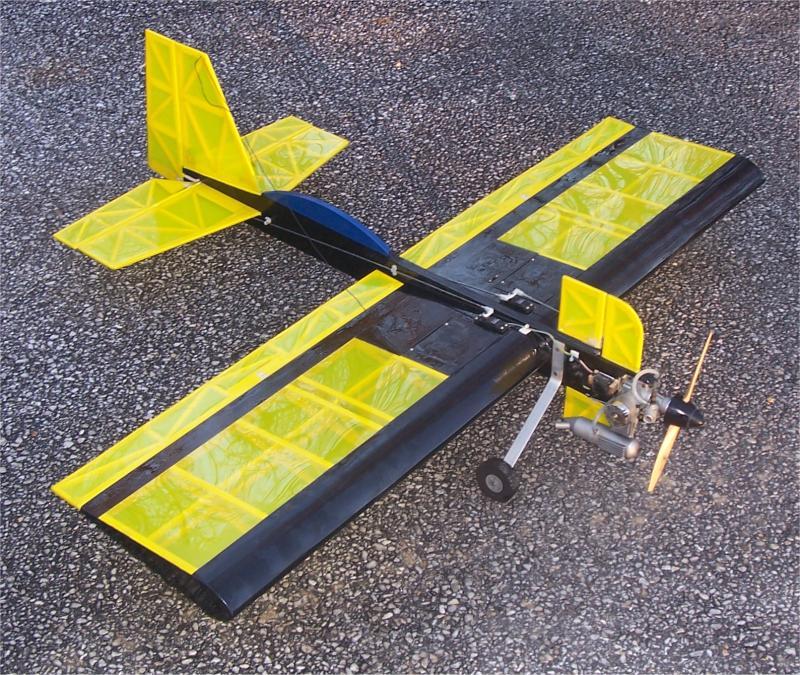
Before the crash.
Double Trouble Rebuild
I crashed my Double Trouble, my favorite glow-powered airplane, in August 2020. I crashed it out of stupidity and laziness.
I had been flying this plane for 8+ years, and I was using
the same battery pack I had flown with the previous weekend on another plane.
That battery pack was on regular charge after the previous weekend and then on
trickle charge during the week to keep it fresh. The charge indicator
showed it was fine, and surface checks before the flight were fine, so I didn’t
bother to do a full battery status check with my expanded scale voltmeter (ESV).
I took it out on 16 August 2020 to fly in between rain showers. Everything worked fine on the ground and for the first 45 seconds of flight, but as soon as I put a heavy load on the servos, the voltage dropped too low and the receiver browned out. The airplane was snap rolling up and to the right at full power when it stopped responding to commands. It continued in the snap roll, quickly inverting and going straight at the ground at full power. It ended up just off the east side of the hill at the RCMB flying field, in many pieces. The ground was soft from the rain, and the engine buried itself well into the mud. I disassembled the engine and did a lot of cleaning, but it continues to run well on the plane after the rebuild. It is even using the same glow-plug, but the spinner did break in the crash.
This is the first plane I had totally smashed in many
years, and it was all my fault for not doing a full battery check before flight.
After picking up the pieces and doing that full battery check, like I should
have done before the flight, I could see that one of the cells had gone bad
sometime in the previous week. The pack had just enough output to seem
fine on the ground through surface checks, but not enough to keep the receiver
and servos alive in a high electrical load condition.
After getti
So, moral of the story is, DON’T GET COMPLACENT IN YOUR
PREFLIGHT CHECKS! If you have an ESV, make that battery check before
each flight. Do everything you should do to be safe, before putting that
5+ pound object in the sky. It could hurt someone, or at the very least, ruin a
perfectly good airplane.
When I picked the wreckage up, I thought “That’s not worth rebuilding”, but I changed my mind after more inspection. It was close to a write-off but was not so far gone as I feared. I decided I could rebuild it with a little effort. First I built a new fuselage from the cockpit forward, embedding some carbon fiber runners along its length. Then I cut out the broken pieces of the wing, rejoined the wing halves, and added carbon fiber doublers on the main spar. I resurfaced the whole wing D-tube structure with 1/16" balsa, added filler, and did lots of sanding to get it all smooth again. After some time with my Monokote iron and new covering, it is almost as good as new. It flew again for the first time after the rebuild on 4 September 2020.